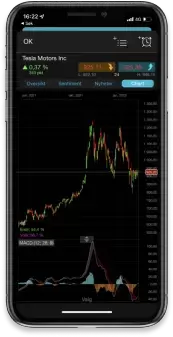We’ve seen a strong session for markets in Europe as investors increasingly adopt the view that central banks could be done when it comes to further rate hikes, while the latest set of US economic numbers pointed to a goldilocks scenario for the US economy.
Europe
There are still pockets of weakness on the earnings front and this is causing the FTSE100 to underperform due to lower energy profits, and underperformance from the telecoms sector.
Shellshares have slipped back after adjusted profits fell to $5.07bn, below expectations of $5.61bn, and well below the $9.6bn in Q1. The company blamed lower prices, volumes as well as margins, along with weaker trading for the slowdown.
As expected, its chemicals division had a difficult quarter sliding to a loss of $468m, although this was offset by a $917m profit on the products side, nonetheless the fall in profitability in this area was quite marked to the tune of 80% year on year. Profits in its integrated gas division fell to $2.5bn, a 34% decline from the same quarter last year and an almost 50% decline from Q1. Upstream the decline in profits was even more marked, with a 66% decline in adjusted profits to $1.68bn, from the same quarter last year, and a 40% decline from Q1.
On renewables profits also fell to $228m, a 69% decline from the same period last year, and a 41% fall from Q1. The decline in profitability here serves to highlight the problems the big oil companies face with respect to the energy transition and the role the legacy business serves in funding this important area.
On the outlook Shell downgraded its expectations for capital expenditure by $1bn to between $23bn to $26bn, as well as announcing a 15% dividend increase as well as a $3bn buyback program for Q3.
BT Group is also lower after the company lost 126k broadband customers in Q1, although sales helped push adjusted earnings up by 5% to just over £2bn. Q1 revenue rose 4% to £5.16bn.
Barclays shares have also come under pressure after the bank reported a mixed set of Q2 and H1 numbers, with the bank downgrading its outlook for net interest margin (NIM). The bank said that they expected NIM to come in below 3.2% to around 3.15% as the bank looks to offset the impact of dynamic deposit balances as clients go in search of higher rates. While this may be considered disappointing its also important to remember that NIM was at 2.67% a year ago so we’ve still seen a solid improvement.
Q2 income was disappointing falling by 6% to £6.28bn, however profits after tax were higher, rising by 25% year on year to £1.6bn. Breaking the numbers down the bank saw an increase in impairments of £372m in Q2, pushing H1 impairments across the group up to £896m.
The Corporate and Investment Bank accounted for the bulk of the fall in Q2 revenue, falling 22% to £3.16bn, while the UK business benefitted from the higher rate environment with a 14% increase to £1.96bn.
On the plus side, British Gas owner Centrica has seen its shares rise to 4-year highs after reporting record profits for the first half of the year. Total group statutory operating profits rose to £6.46bn compared to a £1.1bn loss a year ago. Cashflow has also improved, returning to positive territory to the tune of £1.4bn compared to a £600m deficit a year ago.
Inevitably the extent of the profit swing will prompt the usual howls of protest that the company is profiteering especially since it announced that it would be hiking the dividend by 33% and extending its share buyback program by £450m. Somewhat bizarrely the energy price cap, which was brought in with the intention of preventing energy companies from profiteering was the main reason for the boost to profits, as it enabled the company to benefit to the tune of £500m, offsetting losses from the previous year, proving once and for all the maxim that there’s no problem that can’t be made worse by political meddling.
The company has also been investing into improving the energy resilience of the UK’s energy supply, extending the life of its Morecambe Bay gas field as well as doubling the amount of gas storage at the newly reopened Rough Gas field. Centrica has also opened a new solar farm at Codford in Wiltshire as well as exploring new hydrogen partnerships. The company also said it had paid £650m in tax to the UK government in H1.
ITV shares have risen to their highest levels in 2 months after reporting H1 numbers that were slightly below expectations. ITV Studios has once again been the standout performer with total revenues rising to a record £1bn, an 8% increase on the same period last year. This has helped offset an 11% decline in total advertising revenue which fell to £811m. Total revenue for the period fell 2% to £1.64bn, while profits before tax fell sharply to £118m. The broadcaster said that advertising is in its worst state since 2008, however the continued outperformance of ITV Studios appears to have convinced investors that the company will be able to meet its year end targets. Its investment in streaming services also appears to be reaping dividends, with a 33% increase in streaming hours to 737m for H1.
Carnival shares have also had a good day on the back of a strong upgrade from US sector peer Royal Caribbean after the cruise company reported a 62% rise in Q2 revenue and updated its full year guidance for profits to $6.10c a share, from $4.60c a share, citing strong demand for cruise ship travel.
US
US markets opened higher with the S&P500 pushing above 4,600 and to its highest level since March 2022, after US Q2 GDP came in at 2.4%, comfortably above expectations, while personal consumption also came in better at 1.6%. The real standout was a strong weekly jobless claims number which fell to 221k, while continuing claims fell to their lowest levels since January at 1.69m.
After Snap disappointed the market yesterday there was some concern that the slowdown in revenues there might be replicated in Facebook owner, Meta Platforms latest Q2 numbers after the close. These concerns proved unfounded as revenues rose 11% to almost $32bn, pushing net income up by 16% to $7.79bn, or $2.99c a share, with the shares pushing up to their highest levels in 18 months. Ad impressions and price per ad were higher to the tune of 34% as daily active users rose 7% year on year. For Q3 Meta said they expect to see revenues of between $32-34.5bn, with total annual expenses of between $88-91bn, which is slightly higher than the previous $86-90bn. On the downside the Reality Labs unit is expected to see an increase in operating losses over the next year. Revenues here fell to $276m from $452m, while losses rose to $3.7bn, pushing total losses for H1 in this area to $7.7bn.
On the downside eBay shares have slipped back after downgrading forecasts for Q3 revenue and profits. Q2 revenues saw an increase of 5% to $2.54bn, however Q3 revenues are expected to come in lower at between $2.46bn and $2.52bn, while profits are expected to slip below $1 a share.
Southwest Air is also under pressure after it warned that higher costs might weigh on its profitability over the rest of the year, after Q2 profits came in line with forecasts at $1.09c a share. Q2 revenues came in at $7bn, with higher fuel and labour costs running the risk that profits could get squeezed in H2.
FX
It was a day of two halves for the euro starting very much on the front foot and pushing back above 1.1100 in the aftermath of last night’s decision by the Federal Reserve to hike rates by 25bps, as markets increasingly factored in the likelihood that the US central bank is done when it comes to further rate hikes. Today’s decision by the ECB to follow suit with a 25bps hike of its own, wasn’t a surprise, and the euro held up well initially. At the press conference as ECB President Christine Lagarde started to speak, she undermined the central message of optionality in keeping the ECB’s options open when it comes to a September hike, and being data dependant, by concluding that she doesn’t think that the ECB has more ground to cover when it comes to further hikes. This last comment saw the euro slide to the lows of the day, below 1.1000, as markets priced in the prospect that the ECB is done.
With central banks seemingly nearing the end of their rate hiking cycles the US economy has continued to exhibit resilience despite rates being close to their highest levels in the last 20 years. Today’s US Q2 GDP numbers saw the economy grow ahead of forecasts at 2.4%, and weekly jobless and continuing claims slowed to 221k and 1,690k, respectively. The strength of the US numbers also prompted a sharp move higher in the US dollar.
The Japanese yen is in focus ahead of tomorrow morning’s Bank of Japan rate decision, with whispers abounding that the Bank of Japan could be about to tweak its yield curve control policy, with a view to targeting shorter term rates. The BoJ has been the major outlier this year in terms of tightening policy, making the yen the worst performer for the first half of this year. Recent whispers suggest a move may now be deferred until October, however as with anything with Japan the currency may also have a part to play if we head back towards 150.00. Of course, it’s also important to remember there is a US dollar element here, and the fact that the market thinks the Fed is done after this week’s July rate rise is another factor behind the recent volatility in the Japanese currency. Whatever happens this week with the BoJ, with Japanese core CPI already above 4% and at a 40-year high a policy tweak is coming, with the only question being around timing, and that could see yen gains in the coming months.
Commodities
Gold prices initially edged back towards their recent highs after the Federal Reserve raised rates as expected by 25bps in what could be, the final rate hike in the current rate hiking cycle. However, the strength in US economic data saw the US dollar rebound strongly, knocking the yellow metal sharply lower, as money flowed back into US stocks, with the S&P500 pushing to its highest level since March 2022.
Oil prices have ticked back towards their recent highs on the back of a weaker US dollar, and the hope that US rate rises are now in the rear-view mirror. There is still this sense that for all the concerns about a global slowdown we will see a much-improved performance from the Chinese economy in H2, which should help to keep prices underpinned.
Volatility
It was a distinctly mixed bag for the AUD/USD trade on Wednesday as the market attempted to digest both the softer than expected Australian inflation print, followed by a clear message from the Federal Reserve that the inflation fight wasn’t over yet. It was this second point that served to dominate, driving broad-based weakness for the greenback as some are left believing that the extended run of higher rates will start to erode growth. One day vol on AUD/USD sat at 14.16% against 10.81% for the month.
That Australian inflation data bolstered the performance of the ASX200 which has been making steady gains over the last three weeks. The support here was sufficient to leave the index as the most active in the cohort, with one day vol sitting at 17.56% against 11.07% on the month. The Nasdaq was also left looking somewhat skittish although levels held despite the hawkish Fed narrative. One day sat at 19.5% against 14.2% for the month.
Price action elsewhere was focused on several heavyweight individual stocks. UK banks were rattled in the wake of government intervention seeing the head of Nat West resign, but it was peer Lloyds Banking Group that proved to be the most active after earnings news was seen to disappoint. One day vol here printed 76.04% against 30.59% on the month. Conversely Boeing found favour off its numbers where a narrower loss and higher sales than had been forecast impressed the market. The underlying added close on 9%, with one day vol printing 79.32% against 36.06% for the month.
Disclaimer: CMC Markets is an execution-only service provider. The material (whether or not it states any opinions) is for general information purposes only, and does not take into account your personal circumstances or objectives. Nothing in this material is (or should be considered to be) financial, investment or other advice on which reliance should be placed. No opinion given in the material constitutes a recommendation by CMC Markets or the author that any particular investment, security, transaction or investment strategy is suitable for any specific person. The material has not been prepared in accordance with legal requirements designed to promote the independence of investment research. Although we are not specifically prevented from dealing before providing this material, we do not seek to take advantage of the material prior to its dissemination.







